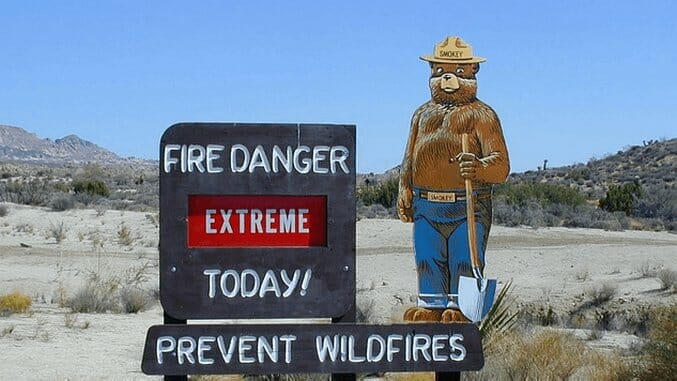Sustainability Report: After the Fire Season
Restoring forests is a complicated process

After the smokejumpers go home and the TV crews move on, the forest landscape devastated by wild fire is primarily left to the locals and state to deal with. With many interested parties, this means there are as many opinions about how to address restoration.
Residents want to rebuild their homes. Business owners want to replace their lost structures. Township, county and city governments want to preserve their tax base and development opportunities (including tourism) while preventing any more damage from flooding, mudslides and other disasters that can follow a fire. Still others wish to protect the local flora and fauna, maybe pursue more restrictions on encroachment. Considering the increased frequency, duration and intensity of forest fires, the reclamation process ought to be well established. It isn’t.
![]()
Increasing Devastation
According to the National Wildfire Federation, forest fires are only getting worse. The organization draws a direct connection between global warming (climate change) and the threat of fires. The conditions they describe include:
 A healthy forest can recover from fire naturally, but allowing that slow process to occur has consequences for those who live near that landscape. (Photo courtesy of Marc Mooney)
A healthy forest can recover from fire naturally, but allowing that slow process to occur has consequences for those who live near that landscape. (Photo courtesy of Marc Mooney)
Longer fire seasons
Spring runoff occurs earlier, so summer heat builds up more quickly, and warmer conditions extend into fall. Western forests typically become combustible a month after snowmelt finishes; snowpack is melting one to four weeks earlier than it did 50 years ago.
Drier conditions
Summertime temperatures in western North America are projected to rise, increasing evaporation rates. At the same time, precipitation is expected to decrease by up to 15 percent.
More fuel for forest fires
Warmer and drier conditions are conducive to widespread insect infestations, resulting in broad ranges of dead/combustible trees.
Increased frequency of lightning
As thunderstorms become more severe, lightning strikes will likely increase. In the western U.S., a 1.8-degree increase in temperature is expected to lead to a six percent increase in lightning.
“The overall area burned is projected to double by late this century across 11 Western states if the average summertime temperature increases 2.9 degrees Fahrenheit, with Montana, Wyoming, New Mexico and Utah being hit particularly hard,” according to the organization’s website.
-

-

-

-

-

-

-

-

-

-

-

-

-

-

-

-

-

-

-

-

-

-

-

-

-

-

-

-

-

-

-

-

-

-

-

-

-

-

-

-

 The bodies of water in and near a forest fire are part of the forest landscape affected by a blaze. One issue of restoration is handling the dead wood, soil and fire suppression materials that flow in the water during and after the blaze. (Photo courtesy of
The bodies of water in and near a forest fire are part of the forest landscape affected by a blaze. One issue of restoration is handling the dead wood, soil and fire suppression materials that flow in the water during and after the blaze. (Photo courtesy of  Vegetation can return to a landscape devastate by fire, and some plant species need fires to thrive. (Photo courtesy of
Vegetation can return to a landscape devastate by fire, and some plant species need fires to thrive. (Photo courtesy of 






































